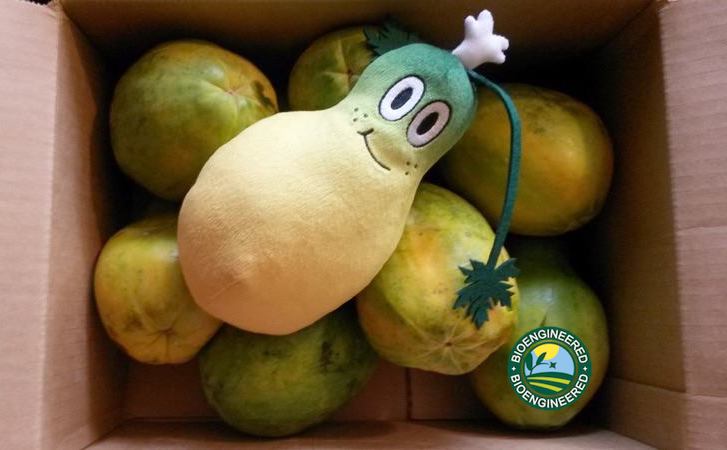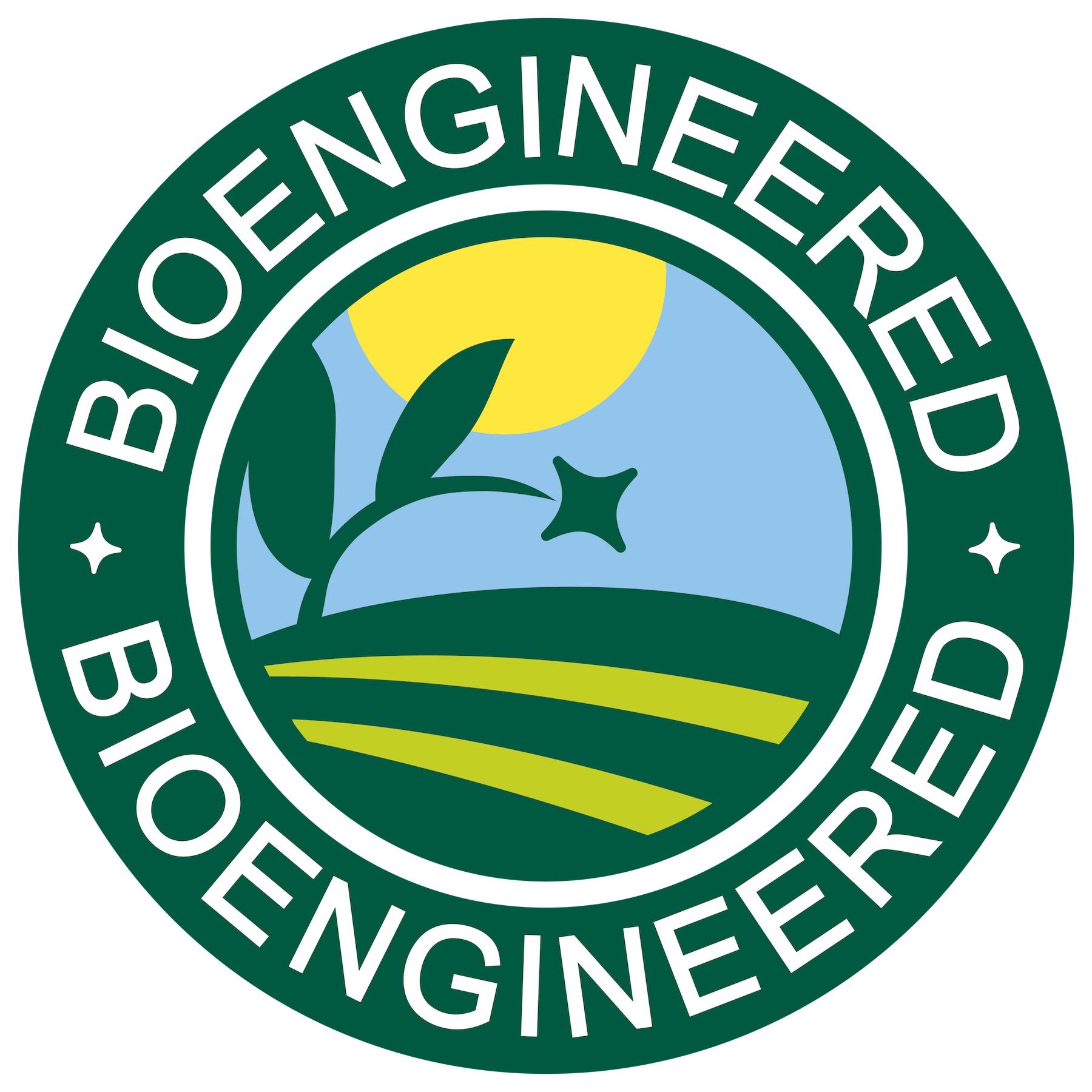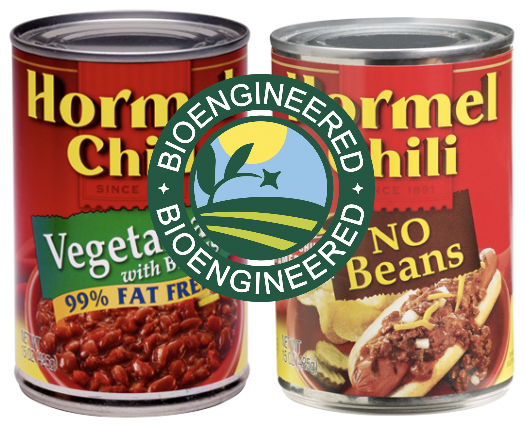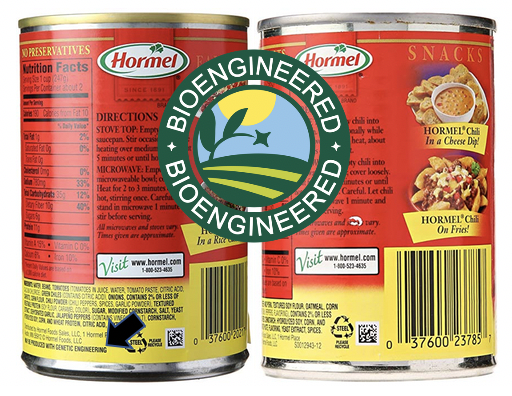On December 20th, 2018, the USDA Agricultural Marketing Service (AMS) released the final rule for the National Bioengineered Food Disclosure Standard. It’s 239 pages of dense text that everyone in the food system is trying to quickly figure out. What does it all mean? How will the standard impact farmers, processors, and food manufacturers? How will it impact international trade? Consumers will want to know how new labels will impact their choices at the grocery store.
In this post, I’ll open the box and look at what’s excluded, discuss prohibition of “may be” labels, and talk about how much this will cost. Mary Mangan has shared her initial reactions to the final rule in First Look at the Bioengineered Label Final Rule on the Biofortified Blog, and you can find more information on our Bioengineered Label News page.

Why is this regulation so weird?
First, I wanted to point out that AMS had a lot of prior food labeling laws and regulations to work within. As is typical for most regulations, AMS could only act within the restrictions of the National Bioengineered Food Disclosure Standard, the law that was passed by Congress in July 2016.
Further, many of the weird parts of these bioengineered labeling regulations are weird because they had to snake around and within the thicket of existing food labeling regulations. Changing other laws and regulations was outside the scope of these regulations, even if it it would have made things easier for AMS, for food manufacturers, and for consumers.
This regulation, called the National Bioengineered Food Disclosure Standard (NBFDS), must be implemented by January 1, 2020. Small companies have until January 1, 2021. It is possible, though unlikely, that Congress would pass another food labeling law before that date that would change how this labeling regulation and other regulations overlap.
Defining bioengineered
Defining GMO has always been tricky. Biotechnology is an ever advancing technology, and different US and international agencies have defined it differently for different purposes. Under the National Bioengineered Food Disclosure Standard, bioengineered food is:
food that contains genetic material that has been modified through in vitro recombinant deoxyribonucleic acid (rDNA) techniques
and for which the modification could not otherwise be obtained through conventional breeding or found in nature;
provided that such a food does not contain modified genetic material if the genetic material is not detectable…
Or, more simply, “The Standard defines bioengineered foods as those that contain detectable genetic material that has been modified through certain lab techniques and cannot be created through conventional breeding or found in nature.”
Bioengineered food is not: “An incidental additive present in food at an insignificant level and that does not have any technical or functional effect in the food”.
That dance between what bioengineered is not (exclusion) and what it is (inclusion) is central to this regulation. We start with a “List of Bioengineered Foods” or foods that are presumed to be bioengineered and then look at exclusions from there:
alfalfa, apple (ArcticTM varieties), canola, corn, cotton, eggplant (BARI Bt Begun varieties), papaya (ringspot virus-resistant varieties), pineapple (pink flesh varieties), potato, salmon (AquAdvantage®), soybean, squash (summer), and sugarbeet.
Bioengineered label exclusions

The National Bioengineered Food Disclosure Standard has numerous exclusions to what is required to be labeled. Some of the bioengineered label exclusions are due to other labeling laws and regulations and how they overlap with this regulation. Some of the exclusions are unique to this regulation.
Here are the lists of what’s excluded (not required to be labeled) and included (required to be labeled) as I found in my initial read of the final rule. Am I missing any? Let me know in the comments.
Excludes
- foods with undetectable modified genetic material
- Certified Organic foods
- food served in a restaurant or similar retail food establishment
- ready-to-eat items prepared by grocery stores
- food made by “very small food manufacturers” with annual receipts of less than $2.5 million (which means 74% of food manufacturers and 45% of dietary supplement manufacturers do not have to comply with bioengineered labels)
- distilled spirits, wines, or malt beverages
- pet food and feed for animals
- food derived from an animal (meat, eggs, milk, honey, rennet and other enzymes derived from animals) that has eaten bioengineered feed
- multi-ingredient food products that contains meat, poultry, or egg product (including beef broth, if identified as a composite ingredient) as the first ingredient
- multi-ingredient food products that contains broth, stock, water, or similar solution as the first ingredient, and a meat, poultry, or egg product as the second ingredient
- processing aids and enzymes if they are not listed as ingredients
- up to 5% inadvertent presence of bioengineered ingredients
Includes
- foods with detectable modified genetic material, if they meet one or more of the following inclusions:
- raw and processed foods (raw produce, seafood, dietary supplements, and most prepared foods, such as breads, cereals, non-meat canned and frozen foods, snacks, desserts, and drinks
- wines with less than seven percent alcohol by volume and beers brewed without malted barley and hops
- chewing gum
- dietary supplements
- processing aids and enzymes if they are listed as ingredients
- food derived from a microorganism that has eaten bioengineered “feed”
Exclusions in practice

Just for the sake of an example, let’s look at two types of Hormel Chili. I’m only using Hormel here because they have they have conveniently similar products to compare with the ingredients online. The standard used pork stew as an example.
Both the Vegetarian with beans and NO Beans chili types of Hormel Chili contain soy flour, which likely would need to be labeled as bioengineered, unless Hormel was to source non-bioengineered soy flour. Note: nucleic acids can be found in soy flour so it is not an exempt product on that basis.
However, let’s look at the first few ingredients of each chili type. Vegetarian with beans has “Water, Beans, Tomatoes”. Even though soy is 9th in the ingredient list for the vegetarian chili, and listed as being less than 2% or less of the product, it would require a bioengineered label. NO Beans has “Water, Beef and Pork, Textured Soy Flour”. Even though soy is 3rd in the ingredient list, it would not require a bioengineered label.
Why is this so weird? Again, AMS had to work within existing food labeling laws and within the National Bioengineered Food Disclosure Standard. As such, products like NO Beans chili that are subject to the Federal Meat Inspection Act, Poultry Products Inspection Act, or the Egg Products Inspection Act don’t get bioengineered labels but products like Vegetarian with beans chili would likely get such a label – even if they both contain the exact same soy flour.
Wait, there’s more! A product can escape bioengineered labeling and contain up to 5% bioengineered ingredients, as long as those ingredients are there inadvertently. So you could have unlabeled chili that actually contains more bioengineered ingredients than Hormel Vegetarian with beans, while the Hormel with 2% or less soy flour requires a bioengineered label.
“May be” is not allowed

Hormel is somewhat ahead of the game when it comes to following the bioengineered label exclusions. They already have a “may be produced with genetic engineering” label on their Vegetarian with beans chili, but do not have such a label on the NO Beans chili.
Except… Hormel and many other companies will have to change their current labels that state “may be produced with genetic engineering” or “may be partially produced with genetic engineering” because the NBFDS explicitly prohibits “may be” statements for the purposes of meeting bioengineered labeling requirements.
In some cases, this will force companies to label products as bioengineered when there isn’t any bioengineered content. As I wrote nearly 10 years ago in What’s in a label?, some ingredients can have multiple sources, including various plants, animals, and even petroleum. Companies might choose different versions of an ingredient based on cost or other factors. If one potential source of an ingredient would require a bioengineered label, and the product contains detectable genetic material, then the company would need to either label all of the product just in case they use that ingredient, or continually be ready to swap out labels.
Bioengineered labeling is mandatory and costly
Note that bioengineered labels, like all GMO or non-GMO labels, don’t provide much in the way of useful information. As AMS states in this final rule:
Nothing in the disclosure requirements set out in this final rule conveys information about the health, safety, or environmental attributes of BE food as compared to non-BE counterparts. In fact, the regulatory oversight by USDA and other Federal Government agencies ensures that food produced through bioengineering meets all relevant Federal health, safety, and environmental standards.
And yet, despite the lack of a health, safety, or environmental risk that can be attributed to bioengineered foods in aggregate, this sunny logo will start showing up on products soon. Companies have until January 1, 2020 (January 1, 2021 for small companies) to comply. They must label their products or reformulate to avoid bioengineered ingredients. This process is expected to be costly:
USDA estimates that the costs of the NBFDS would range from $569 million to $3.9 billion for the first year, with ongoing annual costs of between $51 million and $117 million.
If we are going to mandate that food companies spend money, why not ask that they spend money on real issues like food safety and nutrition? As I described in an article for SciMoms, we already have higher food prices for organic and non-gmo labeled foods. Now we can expect to see conventional food prices to go up as companies pass these costs on to the consumer. Even worse, with this high cost comes no clear benefit:
The NBFDS is not expected to have any benefits to human health or the environment. Any benefits to consumers from the provision of reliable information about BE food products are difficult to measure.
The lack of health, safety, or environmental benefits along with the huge cost of this regulation leaves me wondering why that “may be” option wasn’t left in place. It would have provided some transparency while greatly reducing cost, as I mentioned in my public comment to AMS on behalf of Biology Fortified. I’m also left wondering why the industry’s very functional voluntary labeling wasn’t left in place. Tempting as it may be, discussion of what could or should be is over, and now we talk about what is.
What’s next?
Even though no one will be totally satisfied with these regulations, overall AMS did a thorough job of justifying their decisions in the final rule. It is a good example of regulatory compromise across diverse stakeholder groups. While others have identified some gaps, such as lack of a definition for non-GMO, we now have a national path forward rather than a state-by-state patchwork. That’s good for industry, but more importantly, good for consumers. Find news and information about the Bioengineered Label on our dedicated page.
I think the new label is species-ist. It doesn’t include animals.
One of the biggest surprises was the Bt brinjal. That must mean it’s a big success. I’ll have to keep an eye out for it at the Nepali store where I shop. They import a lot, and it might turn up in some of the packaged foods.
At least the 5% threshold was a win. (compared to worse ideas)
And at least the haters won’t be able to force recalls and other hostage-taking at grocery stores with poorly done lab tests. Filing complaint paperwork won’t have the kind of drama and impact they really wanted.
I wish more of the stories were including how much this costs for a terrible idea with no value to health or the environment.
LikeLike
Food Safety News did a cost analysis back in May …
https://www.foodsafetynews.com/2018/05/be-label-launch-may-cost-more-than-feds-yearly-spend-on-food-safety/
And for folks interested, there has been a running thread over at Let’s Talk GMOs which can put some historical context around the law, tracking it since it first was voted out of the Senate Committee …
https://www.facebook.com/groups/1552975568327324/permalink/1616475731977307/
LikeLike
The Food Safety News article says the first year of spending on BE labeling will be more than the government spends annually on food safety – which is correct. However, the spending won’t be by the government. Instead it will be paid by corporations who will pass the spending on to consumers. Government spending via taxes impacts higher (or middle) income people more than lower income people. Increased food costs undoubtedly impacts lower income people more than higher income people. Surveys show that generally lower income people aren’t as concerned about GMO labeling – yet they are going to bear the cost. Isn’t that just typical?
LikeLike
I am extremely disappointed that the 239 pages take no notice of the explosion in deceptive non-GMO disclosures, for products like olive oil and orange juice, for which no bioengineered alternative is available. The whole justification for a mandatory label is that consumers should be able to tell if a product has an ingredient which the consumer would like to avoid. For two decades I have been following the GMO labeling campaign and it has been full of complaints that the food manufacturers want to deceive consumers. When you see, on the store shelf, two brands of olive oil and one has a non-GMO Project icon, who is trying to fool the consumer?
LikeLike